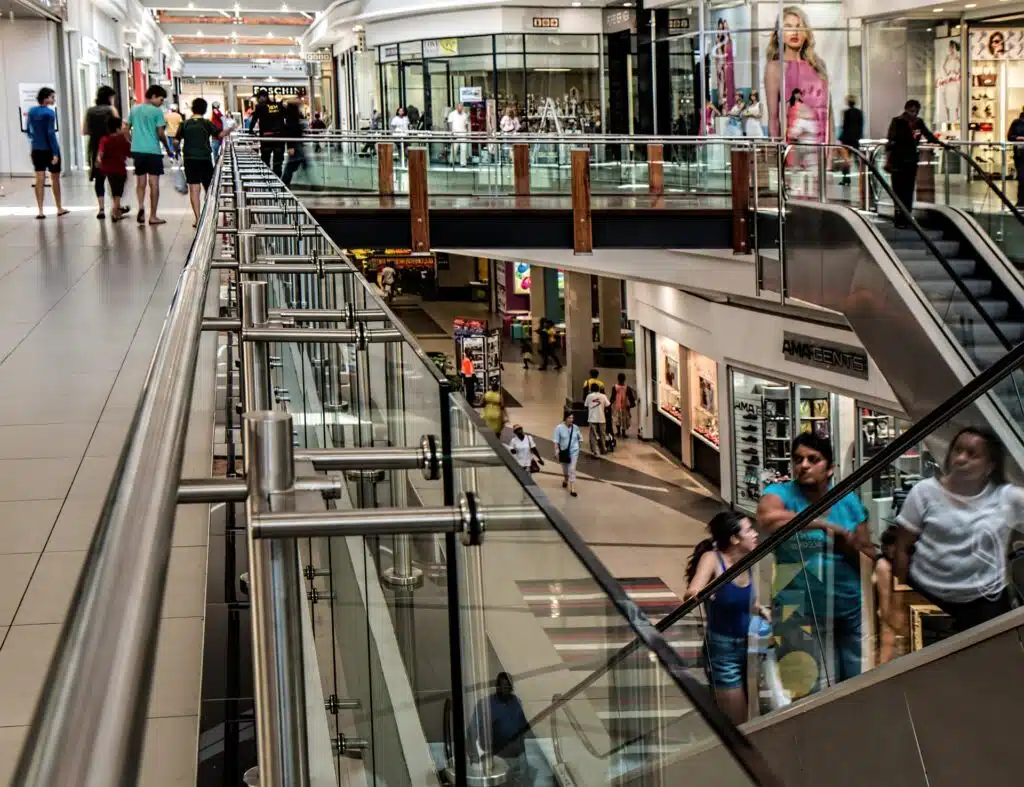
Building a Thriving Retail Store Network: 6 Practical Strategies for Growth and Customer Engagement

Introduction
Are you a retail business owner looking to expand your reach and increase profitability?
In today’s competitive retail landscape, a robust retail store network can be a game-changer. Beyond just selling products, brick-and-mortar locations offer a unique blend of benefits: increased brand awareness, tangible brand experiences, and convenient fulfilment options. However, success hinges on strategic planning and ongoing optimisation.
This article explores proven tactics to help you build a thriving retail store network that drives sales, fosters customer loyalty, and boosts overall profitability.
Importance of a Thriving Retail Store Network
In today’s omnichannel retail landscape, a well-planned network of physical stores remains a powerful asset, offering a unique blend of advantages that go far beyond just selling products.
Brick-and-mortar locations can:
- Enable access to a wider market
- Create greater brand recognition
- Provide a tangible brand experience that strengthens customer relationships and fosters brand loyalty
- Serve as fulfilment hubs for online orders, offering a level of convenience and immediacy that digital channels alone cannot match.
However, with the retail environment constantly evolving, it’s crucial for retailers to adopt strategic planning and ongoing store optimisation to ensure their retail store network remains a thriving component of their overall omnichannel strategy.
Customer Market Research is Key: Who Do You Want Through Your Doors?
Before you even start scouting potential sites, you need to understand who your ideal customer is on a personal level.
This means understanding not just their age and income, but their shopping motivations, preferred channels, and pain points.
What are their passions? What frustrates them about shopping? How do they research products before making a purchase?
The answers to these questions will inform everything from your:
- ideal store locations
- store layout
- product assortment
- marketing strategy and
- staff training.
By building a detailed customer profile, you can ensure your stores cater directly to the needs and desires of your target audience, maximising the chance they’ll walk through your doors and convert into loyal customers.
If you have an existing online sales channel or existing stores, data mining the anonymised credit card data of your customers can provide a wealth of information about them.
Location, Location, Location (and Data)
The golden rule of retail real estate still holds true. Choosing the right locations is crucial for attracting your target audience and driving sales. But gone are the days of relying solely on intuition. Today, data-driven site selection is key.
You need to identify the Catchments where your ideal customers live or work.
Next, you want to identify the Locations within those Catchments that your ideal customers shop.
Finally, you want to identify your ideal Premises at those Locations for your business.
This can be achieved through a variety of methods, including:
- Demographic Data: Analyse census data, consumer spending reports, and market research studies to understand the age, income level, and household composition of residents in your target markets.
- Shopping Behaviour Data: Look at traffic patterns, competitor analysis, and local shopping trends to understand where your target customers are already shopping and what kind of shopping experience they’re looking for.
- Competition Analysis: Identify existing stores in your target markets, both direct and indirect competitors. Analyse their strengths and weaknesses to understand how you can differentiate your offering and attract customers.
By gathering this comprehensive data, you can create a profile of your ideal store location. Look for areas with a high concentration of your target demographic, strong foot traffic patterns, and minimal competition from similar retailers.
Optimising the In-Store Experience
Your retail store network is an extension of your brand, a three-dimensional embodiment of the personality and values you communicate online. This means creating a welcoming and engaging environment that reflects your brand identity from the moment a customer walks through the door.
Store Layout:
- Frictionless Flow: Design your store layout with customer ease in mind. Ensure a clear and intuitive flow that guides customers through the shopping journey without dead ends or confusion.
- Strategic Product Placement: Use product placement strategically to promote impulse purchases, highlight key items, and encourage customers to explore different categories.
- Sensory Appeal: Consider factors like lighting, music, and even scent to create a mood that aligns with your brand and enhances the shopping experience.
Product Presentation:
- Visual Storytelling: Go beyond simply displaying products. Use creative merchandising techniques to tell stories, showcase product benefits, and inspire customers.
- Accessibility and Trial: Make products easily accessible for customers to examine, try on, or interact with. This is especially important for apparel, cosmetics, and other hands-on categories.
- Clear Signage and Information: Provide clear and concise signage throughout the store to help customers navigate, locate products, and understand product details.
Staff Training:
- Product Knowledge and Expertise: Empower your staff with in-depth product knowledge so they can answer customer questions confidently and provide personalized recommendations.
- Customer Service Excellence: Train your staff to deliver exceptional customer service that is friendly, helpful, and goes the extra mile to ensure a positive shopping experience.
- Omnichannel Awareness: Equip your staff with knowledge of your online presence. They should be able to answer questions about online ordering, returns, and loyalty programs, and seamlessly integrate the digital and physical aspects of the customer journey.
Bridging the Physical and Digital Divide:
- Digital Kiosks: Integrate technology to enhance the in-store experience. Digital kiosks can provide customers with access to product information, reviews, and the ability to browse your online inventory.
- Click-and-Collect: Offer a click-and-collect option that allows customers to order online and pick up their purchases in-store. This creates convenience for online shoppers and can drive additional traffic to your physical locations.
Believe it or not, there are customers that don’t have computers at home. My mother-in-law, still comes to our home to do her internet banking and online shopping as she has no computer at home and its too hard to do on her mobile.
By focusing on these elements, you can create a retail environment that is not only functional but also engaging and memorable, fostering customer loyalty and driving sales.
Embrace the Power of Network Optimisation
Your retail store network shouldn’t be a static entity. Think of it as a living organism that needs constant monitoring and adaptation to thrive. Regularly evaluate the performance of each store using a data-driven approach.
- Sales Figures: Track sales figures closely to identify underperforming stores. Analyse trends over time and compare performance against industry benchmarks.
- Customer Traffic: Monitor customer traffic patterns within your stores. Look for areas with low engagement and consider optimising layouts or product placement.
- Inventory Levels: Utilise inventory data to identify stores that are constantly overstocked or understocked. Optimise inventory allocation based on local demand and sales trends.
Don’t be afraid to make adjustments based on your findings.
- Closing Underperformers: If a store consistently fails to meet profitability goals, it may be necessary to close it down. Redeploy resources to more promising locations.
- Format Flexibility: Consider adopting a flexible store format strategy. You might have flagship locations in high-traffic areas with a wider product assortment, while smaller regional stores offer a more curated selection.
By continuously evaluating and optimising your retail store network, you can ensure that each location is contributing positively to your overall profitability and maximising the return on your investment.
The Omnichannel Advantage
In today’s retail landscape, a siloed approach simply doesn’t work. Physical stores shouldn’t be seen as isolated entities from your online presence. Instead, leverage them to enhance your omnichannel strategy and create a seamless customer experience across all touchpoints.
- Click-and-Collect: As mentioned previously, click-and-collect is a powerful tool that bridges the physical and digital divide. It offers convenience to online shoppers and drives foot traffic to your stores.
- In-Store Returns: Allow customers to easily return or exchange online purchases at your physical locations. This eliminates a potential pain point for online shoppers and encourages them to visit your stores.
- Staff as Digital Navigators: Train your staff to be equipped to answer questions about your digital offerings.
Building Customer Loyalty Through Engagement
Your physical retail stores can be powerful tools for building customer loyalty. They have the potential to be vibrant hubs for customer engagement, fostering brand loyalty that goes beyond simple transactions. Here’s how to turn your locations into magnets for repeat customers:
- Host engaging in-store events. Offer exclusive discounts or early access to new products.
- Design unique loyalty programs. Consider tiered rewards and non-monetary perks.
- Leverage social media for local store promotion. Run contests and use location-based features.
- Create memorable in-store experiences. This could involve interactive displays or personalized consultations.
- Personalize the experience. Greet customers by name and recommend relevant products.
- Empower staff for exceptional service.
Building a Thriving Retail Store Network
By implementing these strategies, retailers can build a thriving retail network that serves not just as a sales channel, but as a cornerstone of their overall brand strategy. Remember, a successful retail network is a dynamic entity that requires continuous evaluation and adaptation. By embracing data, optimising the customer experience, and fostering a strong omnichannel presence, retailers can ensure their physical stores remain a powerful driver of growth and profitability.
If you need a hand, give us a call.
Share this case study to:

